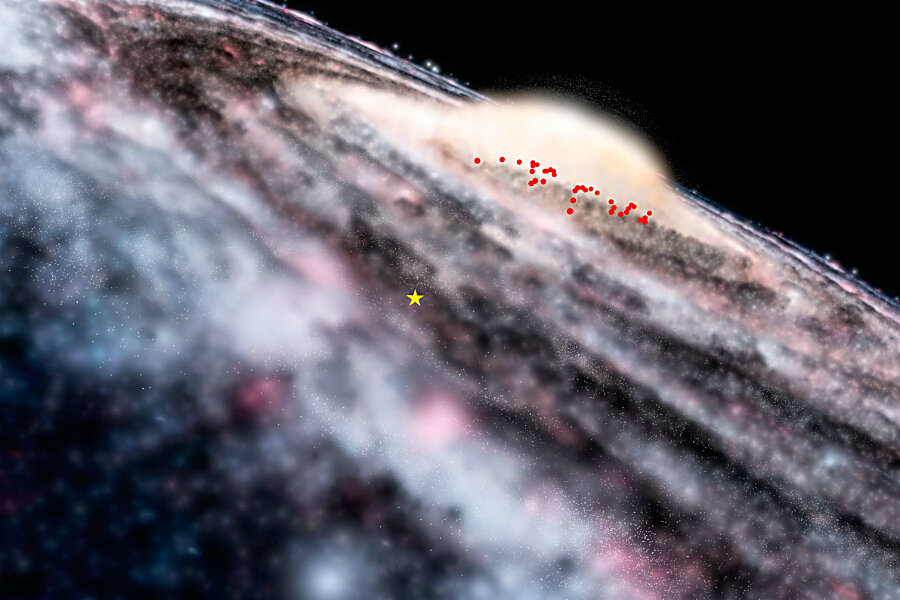Astronomers discover new disk of young stars at heart of Milky Way
Loading...
A team of astronomers have discovered a new component of the Milky Way galaxy – a disk of much younger stars hidden among old stars.
They found the young stars hidden behind thick dust clouds in the galaxy's central bulge, using data gathered by the European Southern Observatory’s VISTA telescope between 2010 and 2014.
"The central bulge of the Milky Way is thought to consist of vast numbers of old stars. But the VISTA data has revealed something new – and very young by astronomical standards!" said Istvan Dékány of the Pontificia Universidad Católica de Chile, lead author of the new study, in a news release.
The astronomers found 655 variable stars called Cepheids that "expand and contract periodically, taking anything from a few days to months to complete a cycle and changing significantly in brightness as they do so," the team explained.
A Cepheid's brightness pulses so predictably that astronomers can use Cepheids to calculate distances to other galaxies, since observed brightness drops by the square of the distance.
Of the 655 Cepheids they found in the heart of the Milky Way, 35 were "classical Cepheids," which are typically young stars, they explain in a report published in Astrophysical Journal Letters.
"All of the 35 classical Cepheids discovered are less than 100 million years old," said Dante Minniti of the Universidad Andrés Bello in Chile, a co-author of the paper.
"The youngest Cepheid may even be only around 25 million years old, although we cannot exclude the possible presence of even younger and brighter Cepheids," he added.
The connection between brightness and the period of Cepheid stars – that bright Cepheids have a longer, slower pulse than dimmer ones – was first discovered by US astronomer Henrietta Swan Leavitt in 1908.
These young stars at the galaxy center suggest a continuous supply of newly forming stars there, over at least the last 100 million years. The astronomers will keep investigating to determine whether they indeed formed at the heart of the Milky Way or whether they originated somewhere else.







